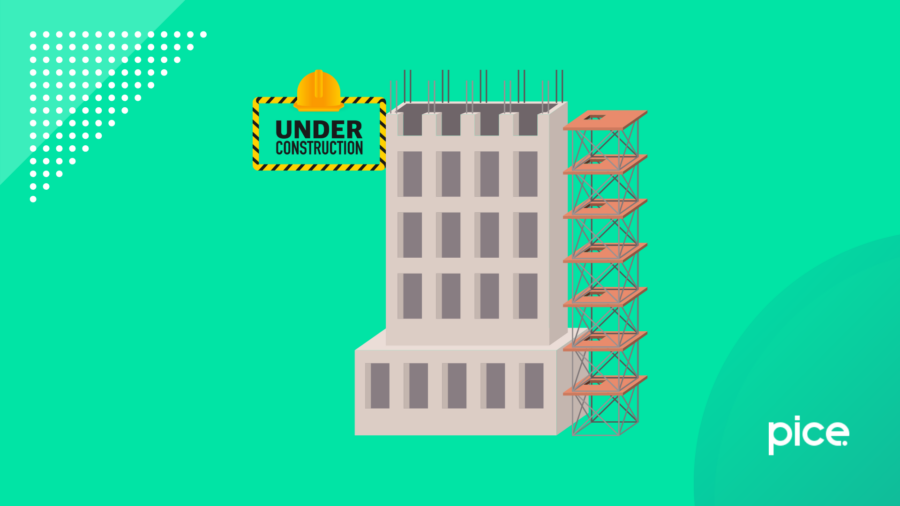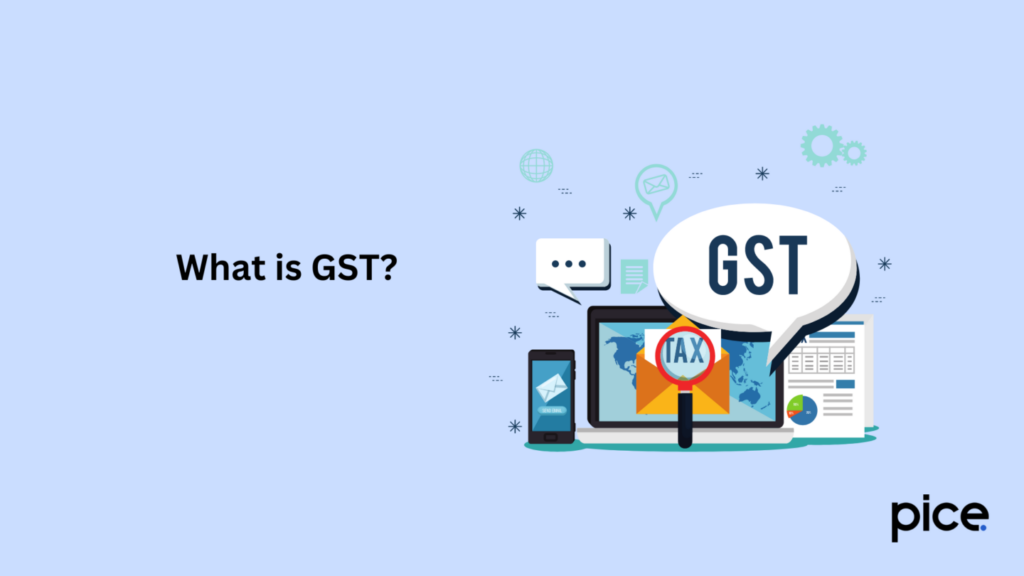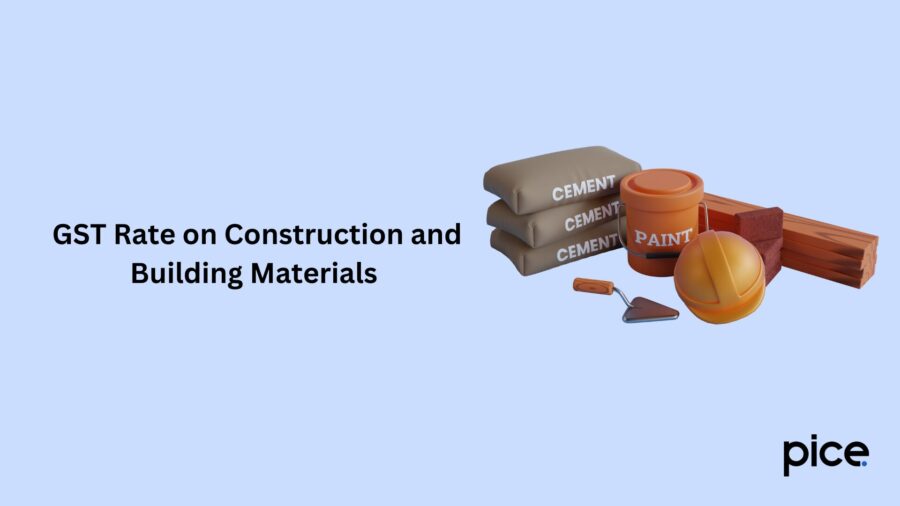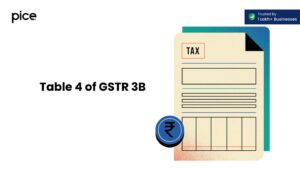GST for Under Construction Property: A Comprehensive Guide
- 18 Dec 24
- 10 mins

GST for Under Construction Property: A Comprehensive Guide
- What Is GST?
- GST for Under-Construction Property: An Overview
- GST Rates for Under-Construction Property
- Calculation of GST on Under-Construction Property
- Impact of GST on Homebuyers
- Pros and Cons of GST Implementation on Uner-Construction Property
- GST Rate on Construction and Building Materials
- Are Maintenance Fees for Housing Societies Subject to GST?
- Conclusion
Key Takeaways
- GST unifies taxes, simplifying the taxation system for under-construction properties.
- Affordable housing attracts 1% GST, while non-affordable housing is taxed at 5%, both without ITC.
- Ready-to-move-in properties are GST-exempt, reducing costs for homebuyers.
- Construction materials like cement, tiles, and interiors have GST rates ranging from 5% to 28%.
- Housing society maintenance fees over ₹7,500 per month are subject to GST.
The Goods and Services Tax (GST) is a transformative implementation in the country’s taxation history. Among the various impacts of GST on real estate properties, the taxation of under-construction properties is significant, influencing both buyers and developers.
In this blog, we will explore GST for under-construction properties, its implications and other important aspects associated with it. Understanding the implications of GST on under-construction property is essential for both buyers and developers in projects of real estate.
What Is GST?

GST, or the Goods and Service Tax, was passed in Parliament in March 2017 and was effective from 1st July of the same year. It is an indirect tax that has subsumed multiple indirect taxes like service tax, excise duty, VAT, etc., in India.
GST is a destination-based, multi-staged tax that applies to every value addition to the supply chain and the supply of goods and services. It is the single domestic existing indirect tax across all the states in India.
Under the Goods and Services Tax regime, the tax is applicable at every point of sales transaction. Central Goods and Services Tax is applicable in case of intra-sales transactions. State Goods and Service Tax is applicable in the case of intra-sales transactions as well. For inter-sales transactions, Integrated Goods and Services Tax (IGST) is applicable.
GST for Under-Construction Property: An Overview
Recently, relief was offered to property buyers who were looking for or under-construction flats or properties. Tax at the rate of 18% is applicable on under-construction properties. The homebuyers need to pay two-thirds or 12% of this. The 6% deduction is based on the assumption that the value of land is being transferred.
As per the 33rd Amendment by the GST Council, the tax rate for under-construction properties or flats is reduced to 5% from the rate of 12%. For affordable homes or under-construction properties that are priced at ₹45 lakh, a 1% tax rate is applicable. This is, however, applicable only for properties without Input Tax Credit (ITC).
Although the cap is ₹45 lakh for both metro and non-metro projects, carpet requirements are variable. The 1% GST rate will be applicable only to those affordable under-construction residential properties with a carpet area of 60 square metres in metropolitan cities like Mumbai-MMR, Delhi-NCR, Kolkata and Hyderabad. It is 90 square metres for non-metropolitan cities.
GST Rates for Under-Construction Property
The rates of GST for under-construction properties depend on the different property types:
1. For affordable housing projects, the following rates are applicable:
GST at the rate of 1% is applicable without ITC.
Effective GST is decreased by the deduction of one-third of the amount that is charged for the affordable house towards the land cost.
2. Properties except affordable housing, the following rates of GST are applicable:
GST at the rate of 5% is applicable without ITC.
Previously, GST at the rate of 12% was applicable with ITC. However, this was decreased to 5% to make housing properties more cost-effective and affordable.
Take a look at the table below to understand the rates of tax and the availability of Input Tax Credit (ITC):
| Type of Property | GST rate |
| GST on under-construction flat purchase (affordable housing properties) | 1% excluding ITC |
| GST on under-construction flat purchase (non-affordable housing) | 5% excluding ITC |
| GST on read-to-move flats | Nil |
Calculation of GST on Under-Construction Property
Let us consider the base price of a property that is under construction to be ₹30 lakh. The calculation of GST on property prices will be:
The calculation for affordable housing will be:
GST: 1% of ₹30,00,000 = ₹30,000
The total cost including GST = ₹30,30,000
The calculation of GST for properties except affordable housing will be:
GST: 5% of ₹30,00,000 = ₹150,000
Total cost including GST= ₹31,50,000
It is important to remember that these calculations exclude charges like registration charges or registration fees and stamp duty charges.
Impact of GST on Homebuyers

The Goods and Services Tax has the following impact on homebuyers:
1. Cost Transparency: GST has streamlined the taxation process in India, making the whole system more transparent. Homebuyers after the implementation of GST have a better understanding and clarity on the taxes they are paying. GST has subsumed multiple indirect taxes under one head, making the tax payment easier.
2. Effect on Non-Affordable Properties: While the applicable GST rates on expensive properties are more than for affordable housing properties, many homebuyers can consider the prices affordable. However, with the GST ITC elimination, developers are ineligible to claim input credits on construction costs. This, in turn, has led to higher total expenses, increasing prices for homebuyers.
3. Clarity in the System of Taxation: The standardised rate of tax across all the states of India has brought more clarity. When compared with the previous system of taxation, which involved the existence of multiple indirect tax rates of VAT and service tax varied from state to state, GST has brought more clarity to the taxation system. Under GST, there is uniformity among the applicable rates.
4. Increase in Affordability: The decreased rate of GST of 1% without ITC for affordable housing has led to these properties being more accessible to homebuyers. This is a huge benefit for people who fall under the middle-income group or first-time buyers.
5. Impact on Under-Construction Apartment: Goods and Services Tax only applies to under-construction properties. Therefore, homebuyers who are looking for ready-to-move-in housing properties can avoid GST payments. This, in turn, leads to high savings and can prove to be more reasonable for homebuyers.
Pros and Cons of GST Implementation on Uner-Construction Property
Let us learn about the pros and cons in detail.
Pros:
Some of the primary advantages of GST in the case of homebuyers are:
- Simplified Taxation Structure: Goods and Services Tax eliminates the applicability of multiple taxes like Value Added Tax (VAT), service tax, etc. It aims to create a single and unified tax structure across all the Indian states.
- Reduction in Rates: The revised tax (GST) rates, like the reduced 1% rate for affordable housing have led to homes being more accessible to the middle-class income groups.
- Transparency: Goods and Services Tax has made the indirect taxation structure of India more transparent. As a result, the risk of any hidden charges is also less. It ensures that the homebuyers get detailed invoices, with specific tax amounts, increasing accountability and clarity.
- Reduction in Tax Burden: By subsuming multiple indirect taxes under one head, GST has reduced the overall tax burden on homebuyers significantly.
- Promotion of Affordable Housing: With reduced rates and an increase in affordability, GST led to the promotion of affordable housing among homebuyers.
Cons
Some of the major negative impacts of the impact of Goods and Services Tax on homebuyers are:
- Increased Initial Costs: The addition of GST to the price of the property can lead to an increase of initial cost of properties. This can reduce the affordability of these properties to some homebuyers.
- \Not Applicable for Ready-to-Move-in Properties: Goods and Services Tax is not applicable for ready-to-move-in properties. This creates a difference in the tax structure and the applicability of taxes between under-construction and ready-to-move-in properties.
GST Rate on Construction and Building Materials

The rate of GST applicable for construction is 18%. However, like affordable housing where the rate is 1%, this rate depends on the construction sector. In the case of the Input Tax Credit, the rate of GST on construction services ranges between 8% and 10%.
The rates of GST on construction materials depend on the type. Some of the materials that are used for construction are:
1. Sand: The sand type differs, like the applicable rate. For instance, the rate of GST is 18% on construction materials like oil shale, asphalt, tar sand, bitumen, and natural asphaltites. However, a 5% GST rate is applicable for metal-bearing sand or natural sand.
2. Cement: The applicable rate is 12%, irrespective of the type of cement like slag, hydraulic, aluminous, or super sulfate.
3. Pebbles, Gravels and Crushed Stones: The applicable rate of Goods and Services Tax is 5%.
4. Coal: The homebuyers need to pay GST at the rate of 5%.
5. Mica: For mica, GST at the rate of 12% is applicable.
6. Interiors: Buyers need to pay GST at the rate of 28% for paint, wallpapers, enamels, electrical appliances, varnish, etc. Sinks, urinals, cisterns and other bathroom necessities are also subject to taxation at the same rate.
7. Tiles: The rate of GST depends on the tile type. GST at the rate of 18% is applicable for bamboo roofing and flooring. However, GST at the rate of 5% is applicable for earthen flooring tiles. On the other hand, plastic flooring, cement tiles, concrete tiles, and artificial flooring tiles are all subject to taxation at the rate of 28%.
Are Maintenance Fees for Housing Societies Subject to GST?
Goods and Services Tax is applicable to maintenance fees collected by housing societies. Let us understand the applicability of GST on maintenance charges better:
1. Threshold Limit for Applicability of GST: GST is applicable only when the total maintenance charge per month is more than ₹7,500. If the maintenance charge is less than the limit, GST will not be applicable.
2. Type of Services Offered: If the maintenance charge also includes services like security, cleaning, and repair, GST will be applicable. They fall under the 'Maintenance, Repair, and Renovation' category.
3. Applicability to RwA: GST is applicable for Resident Welfare Associations (RwA) if the maintenance fee is more than ₹7,500 per person.
Conclusion
GST has simplified the tax structure, promoted transparency, and reduced the overall tax and financial burden for affordable apartments. By being aware of GST for under-construction properties and calculations, homebuyers can assess the financial aspects properly.
💡If you want to streamline your payment and make GST payments, consider using the PICE App. Explore the PICE App today and take your business to new heights.
 By
By 

















